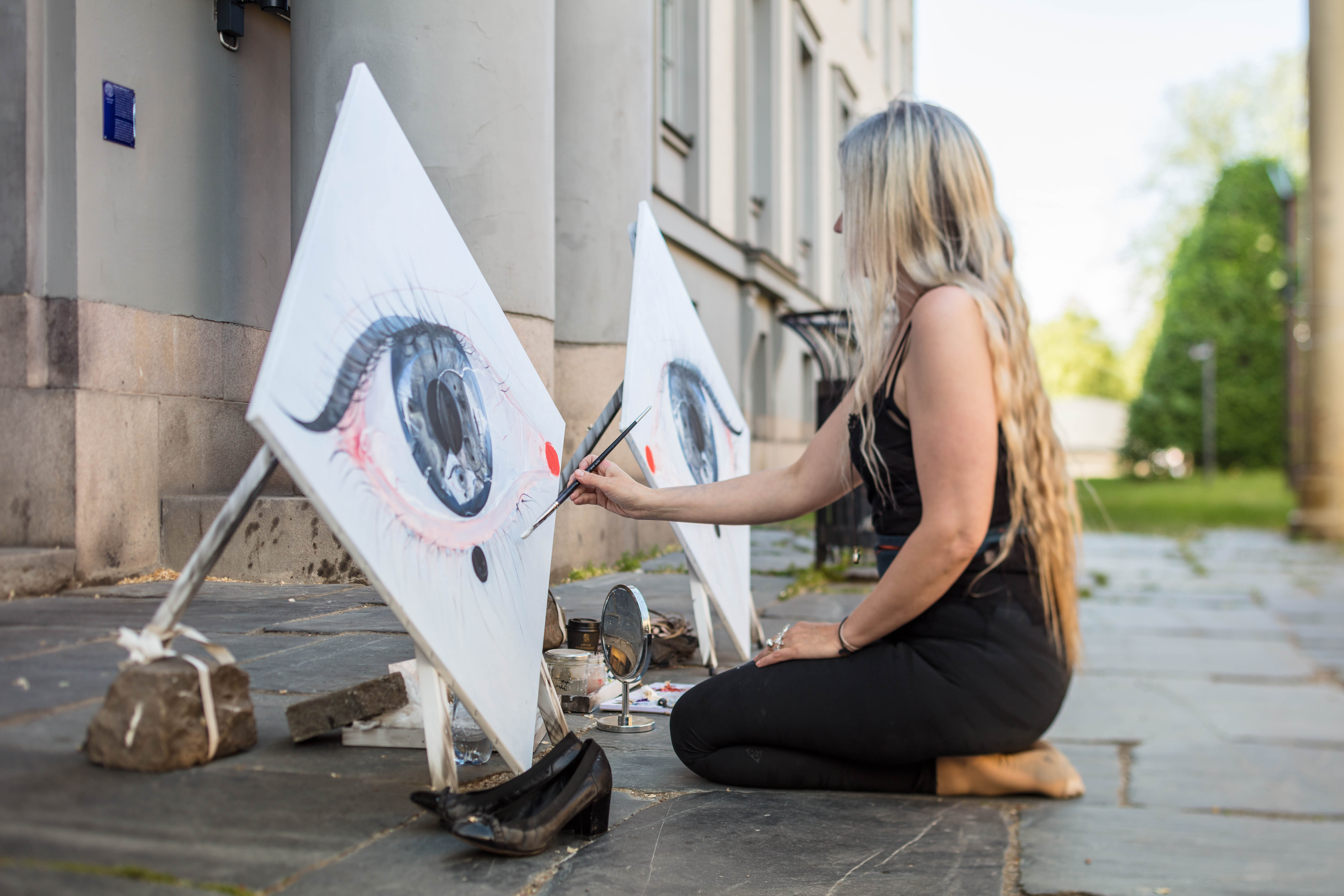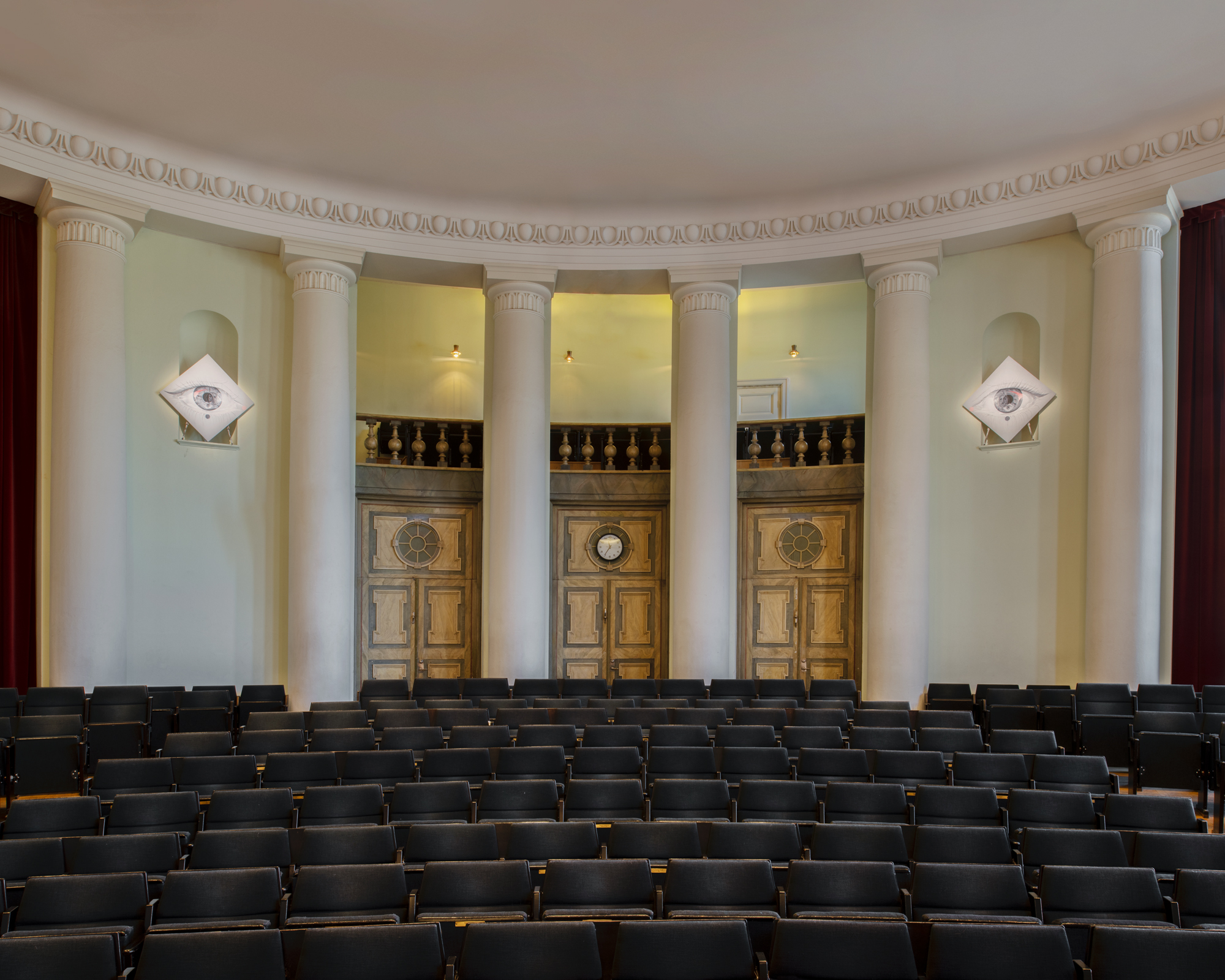Interview with Ylva Snöfrid
 Photo: Jean-Baptist Béranger
Photo: Jean-Baptist Béranger
Interview with Ylva Snöfrid conducted in May 2018 by Robert Stasinski
Who are you, Ylva?
I was earlier divided in two parts, the artist, mother and human being; and Snöfrid her imaginary mirror twin that lived behind mirrors. We transmuted in an eight-hour-long performance ritual last spring at La Panacée in Montpellier. I was born in 1974. Last week my husband, Rodrigo Mallea Lira, and I celebrated that we had been married for 25 years, we have two daughters 7 and 4 years old. I have been living in New York and Berlin, and am now going back and forth between Stockholm and Athens. When I was 24 years of age I received my Master of Fine Arts at the Royal Institute of Arts in Stockholm. I have been working as a curator, I have also been one of the directors of Tensta Konsthall together with Rodrigo and Jelena Rundqvist. I have been working experimentally and finding my own way, I have made an Oracle that has run a Gallery that my husband owned in New York.
What will you do at Stockholm School of Economics?
I will do a daily performance ritual where I paint what is mirrored in my eyes. This will happen outdoors in front of the entrance of the school, and the result, the reminiscence of this action will be a permanent installation in the aula, the auditorium of the school. Timewise the performance ritual will develop organically depending on the weather conditions.
Could you tell us about the larger art context this performance is a part of?
Since 2016, I have been working in Athens with an extended holistic artwork, that is a life-work called The Painter's Studio in the Shadow World. It consists of around 100 paintings and furniture and other things, including economy, as a philosophical and existential tool in this extended practice. This experiment involves also my family, it is a living situation made in relation to Courbet's monumental painting The Painter's Studio: A real allegory summing up seven years of my artistic and moral life, that in 1855 was refused by the Exposition Universelle in Paris. He then built The Pavillion of Realisme, his own exhibition space, as an answer to the conventional Salon. Courbet changed the artists' role and status: before, the artist was more seen as a craftsman and not equally important as for instance the collector. His paintings and oeuvre had ways to change perspectives even within the artwork itself, not as a political tool but as a motive, as the source and expression, as his language.
Do you always know beforehand what you will paint? Are there elements that are unknown in the process?
The process is part of a flow that is totally unexpected. But it has a core that is the vision, how to create that in the reality and not lose it on the way is always a journey, and how to make it into reality with new unexpected elements, such as for instance in this case the situation of this ritual performance, to make its own space as anti-matter, as les contre espaces.
What do the eyes and the mirrors mean in your works?
I am not sure, but I believe in mirror matter, it is a scientific term, and I believe in Quantum Physics and I think painting can serve as a parallel universe that is existing coherently here with us.
I have been working with mirroring and mirrors for years but now I’m in the close up, in the actual eye, the eye as a mirror that mirrors the mirror and the actual world that is around my own body, and in this mirroring the spectator and I can shift place.
Do you have any connection to the School of Economics?
A funny coincidence is that my great grandfather Charles Scott Fearenside (who was a linguist and author in the English language) was a lecturer at the Stockholm School of Economics, so I heard of the school when I was a kid. He created a scandal in the English society when he married his former wife’s sister’s daughter. It was seen as incestuous and the couple fled to Sweden. They were very creative and made their own plays and spent a lot of time in Rättvik Dalecarlia where my grandmother grew up. I have always been a rebel in my heart, and I think the school under Lars Strannegård understands what future means for the human society and that it is a keystone, in the sense that culture can create new perspective in a deeper sense, as opposite to ignorance.
There are several interesting references in this project?
The artist is always lonely within its own time but of course I have my dialogues. A key work for me is Tarkovsky’s film Andrev Rublev, which is about one of the most meaningful icon painters in history and his struggle and disbelief in the arts and how he gets back his faith by meeting a young boy who is casting a bell for a church, and his total trust in his own power as an artist. If the boy does not succeed he will be executed. It is about an artist who does not need much more than the gift to create with his or her own language. Another work is Velazquez’ Las Meninas and Michel Foucault’s analysis of it in his book The Order of Things. And Marina Tsvetaeva’s Art in the Light of Conscience - a book I am coming back to all the time, which is about the freedom and language of art, about being an artist.
You have done a similar performance recently, at CF Hill in Stockholm, a very different space than the School of Economics. What did you learn from that experience and how will this project evolve from that?
As a detour from The Painter's Studio in the Shadow World in Athens, earlier this spring I did a show at CFHILL called From the Eyes of the Painter, a one-month performance, and in connection to this I made a book Ylva Snöfrid: Praxis 1 with my diary drawings from 2016-2018, and a text by Marina Fokidis. So this work that I am doing at the School of Economics is the second detour from The Painter's Studio in the Shadow World in Athens and the most public so far since it takes place outside the main entrance of the school and will interact with the passersby, and hopefully it connects the outer world with the inner world here at Stockholm School of Economics: everyone that enters or leaves Stockholm School of Economics, will be walking on a stage and become part of an act.
 Photo: Mikael Olsson
Photo: Mikael Olsson
Ylva Snöfrid, From the Eyes of the Painter, An Outdoor Performance Ritual, Stockholm School of Economics, at the Entrance, Sveavägen 65, May 28 - June 7, 2018. The result became a permanent installation in the auditorium (aula), of the reminiscences of the performance ritual.